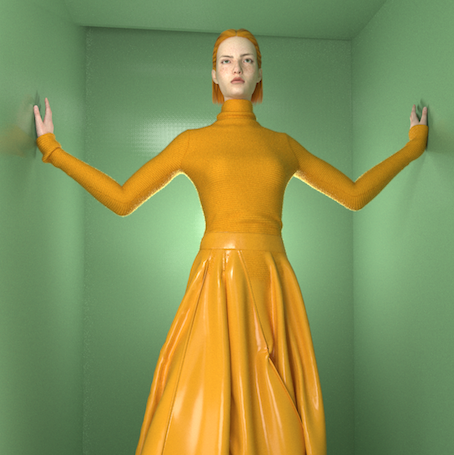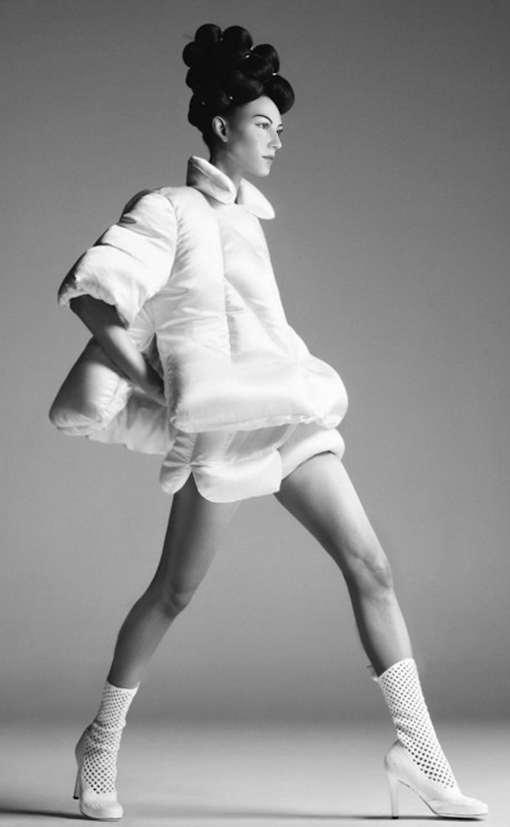Effective Ways to Harness the Impact of AI & Virtual Reality on Fashion

02-01-2024
In the ever-evolving realm of fashion, staying ahead means embracing transformative technologies.
Among these, AI and virtual reality (VR) have emerged as game-changers, influencing everything from retail experiences to design processes.
In this article, we aim to help you navigate the fashion landscape that has been reshaped by VR. Along the way, we will offer insights into maximising its impact for sustainable growth and enhanced consumer engagement.

Understanding VR’s Role in Fashion
Virtual reality (VR) has transcended novelty, evolving into a transformative force within the fashion industry. Today, it’s not just about creating an illusion, it’s about crafting experiences that seamlessly blend the physical and the digital.
According to Textile Today, consumers can try apparel on a 3D avatar without touching the items using virtual fitting room technology. In this approach, customising and personalising an experience with augmented reality for apparel benefits both the company and its customers.
Among the first clothing stores to test out augmented reality clothes was the well-known brand GAP. Runway shows are no longer confined to elite fashion capitals; with VR, they become global events accessible to fashion enthusiasts worldwide.
Virtual try-on sessions allow consumers to explore and interact with clothing from the comfort of their homes, reshaping the way fashion is experienced.
Enhancing Brand Storytelling with VR
According to Forbes, a relevant and enticing narrative helps increase sales. Recalling a story is 22 times more effective than just listing facts. VR provides fashion brands with an unprecedented canvas for storytelling. Immersive campaigns transport consumers to alternate realities, fostering emotional connections and brand loyalty.
Virtual brand experiences go beyond traditional advertising, allowing consumers to participate in narratives rather than passively consume them. Brands can leverage VR to communicate their ethos, values, and sustainability initiatives in an engaging way, creating a deeper resonance with their audience.
Creating Virtual Boutiques and Showrooms
The traditional retail model is undergoing a profound shift with the advent of virtual boutiques and showrooms. VR enables brands to offer personalized, interactive shopping experiences. Consumers can explore a digital store, virtually try on products, and make informed purchasing decisions.
This not only enhances customer satisfaction but also provides valuable data for refining product offerings and marketing strategies. Virtual retail spaces are breaking down geographical barriers, making fashion accessible to a global audience 24/7.
Designing in the Digital Space
Within the digital realm, AI and VR is fostering a new era of creativity in fashion design. Interestingly, tools like an AI image generator are already being used to inspire designers by generating unique patterns, textures, and concepts that can spark new creative directions. Designers can also step into immersive virtual environments to visualise and iterate on their creations. According to Analytics Insight, Sal Mohammed, Nwora Emenike, and Christie Lau are well-known for their use of virtual design technologies.
The three-dimensional nature of VR allows for a more profound understanding of garment aesthetics and fit. This transformative technology is unlocking innovative design processes, facilitating collaboration among global teams, and pushing the boundaries of traditional design methodologies.
VR and Interactive Fashion
VR is redefining consumer engagement by offering interactive fashion experiences. Virtual fashion shows, where viewers can control their perspectives, bring an unprecedented level of engagement.
Gamified shopping apps turn the act of browsing into an entertaining and personalized experience. By providing consumers with an active role in the virtual realm, brands can forge stronger connections, enhance loyalty, and create memorable interactions.
VR Integration With Verifiable Identity Solutions
As virtual interactions become more prevalent, maintaining trust is critical. Integrating verifiable identity solutions within VR experiences ensures authenticity and transparency.
A verifiable credentials solution serves as a cornerstone in the seamless integration of VR and fosters a secure and trustworthy environment for users. This innovative approach not only enhances the overall user experience but also addresses concerns related to privacy and trust in the virtual realm.
According to AU10TIX, a verifiable identity solution typically leverages blockchain technology to create a decentralized and tamper-proof system. In the context of VR, this means that users can confidently engage in virtual interactions, knowing that their identity is securely stored and verified.
Whether purchasing virtual fashion items or participating in immersive events, consumers can trust that their interactions are secure. Blockchain technology, coupled with verifiable credentials, creates a tamper-proof system, safeguarding user data and building a foundation of trust in the virtual fashion ecosystem.
Building a VR-Focused Fashion Roadmap
A VR-focused strategy requires careful planning and execution. Collaborate with VR technology providers, ensuring compatibility with your brand’s vision. Invest in staff training to maximize the potential of VR tools in design, marketing, and customer engagement.
Establish strategic partnerships to stay at the forefront of technological advancements. With these tips, you’ll position your fashion business to thrive in the dynamic intersection of fashion and virtual reality.
In conclusion, the fusion of fashion and virtual reality propels the industry into a realm of boundless creativity and global connectivity. From immersive retail experiences to innovative design processes, VR reshapes consumer engagement. It also ensures transparency through verifiable identity solutions.
Navigating this landscape requires strategic collaborations and technological investments. By capitalising on AI’s and VR’s potential, fashion ventures can stay ahead and shape a future where physical and digital boundaries seamlessly merge. This ultimately creates a compelling and sustainable fashion ecosystem.
Images courtesy of Style3D























